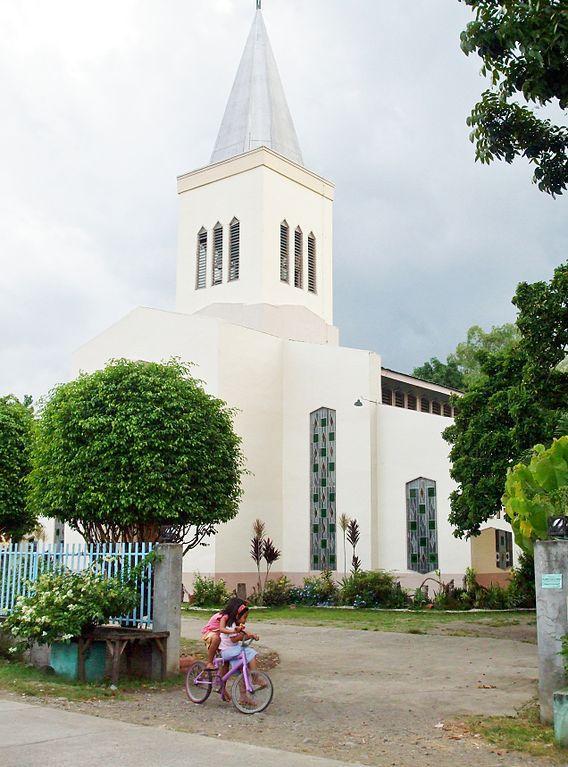
1848
The Spanish missionaries set foot on Davao. Fr. Francisco Lopez from the Augustinian Recollects together with Don Jose Oyanguren came to establish a Christian settlement after defeating local chieftain, Datu Bago. The following years, the Jesuits took over the apostolic responsibility from the Recollects. Instrumental to the evangelization and expansion of the Davao church were missionaries like Fr. Quirico More, Mateo Gisbert, Pablo Pastells and Saturnino Urius.
The entire Mindanao area was under the Diocese of Cebu since1595, until some parts were placed under the jurisdiction of Jaro in 1865.
April 10, 1910
The Diocese of Zamboanga was created and took all ecclesiastical territories in Mindanao away from Cebu. Then, on January 20, 1933 Pope Pius XI created Cagayan de Oro as second diocese in Mindanao. During this time Mindanao was divided into two dioceses, Zamboanga and Cagayan de Oro.
1934
Because of the scarce number of missionaries and since Davao has only eight Jesuits administering it, Bishop Luis del Rosario of Zamboanga sought for foreign help and one of those who responded was the Foreign Mission Society of Quebec or popularly known as P.M.E. Fathers or La Société des Missions-Étrangères.
1937
The first P.M.E. Fathers who arrive here in Davao were Fr. Clovis Rondeau, Omer Leblanc, Leo Lamy, Conrad Cote, and Msgr. Clovis Thibault who was the main proponent of establishing the Parish of Padada. After the first five P.M.E. Fathers, many others followed.
December 17, 1949
Davao became the Prelature Nullius to which Clovis Thibault was appointed as administrator.
June 29, 1951
Pope, Plus XI elevated Cagayan de Oro to an archdiocese together with Jaro. The Archdiocese of Cagayan de Oro became the first archdiocese in Mindanao. It had as its suffragans all the dioceses and prelatures then in Mindanao: Surigao, Cotabato, Sulu, Davao, Ozamiz, and Zamboanga which had been its mother diocese. It became an archdiocese seven years ahead of its mother diocese, Zamboanga.
December 31, 1954
Clovis Thibault, P.M.E. was appointed as Prelate and on February 11, 1955 he was ordained as Bishop. When Davao was later elevated into a Diocese, Bishop Thibault was canonically instituted as its ruling Bishop on July 11, 1966.
May 1, 1977
On the account of Fr. Paul Gravel, P.M.E. in his 25th Padada Parish anniversary message he recalls of the establishment of the Parish. It started with the proposal of Msgr. Clovis Thibault during the Parish fiesta of Digos on the 22nd of August 1952. On the following month September 7, together with his close friend Diosdado Ypil they ventured the new undertaking. They were welcomed by the people of Padada in the person of Mayor Gregorio Matas, Bonifacio Semilla the president of Catholic Association and many others who were supportive of the said plan. Christians during this time must have been excited upon hearing the news. Given that Sta. Cruz was long before became a parish in 1941 and Digos in 1948, to some degree Padada reached the appropriate moment to become a parish.
At that moment Padada had only a chapel situated near the highway, standing near the bread fruit or locally known as ‘kamansi’ (Artocarpus altilis) that is within the vicinity and residence of a certain Rodem. Right after that day they repaired the old chapel and afterward moved it in the residence of the Yap Family which is the location of the church at present. They effectively did it in three weeks time before their fiesta with the help of the people. They called the project ‘Tagbo’ (encounter). There were hundreds of them including the tribal minorities of B’laans of Maragaa and the Tagacaolos of Malalag shared their earnest involvement of the said project.
September 29, 1977
Fr. Gravel celebrated the annual fiesta of St. Michael the archangel in the new site. They completed the initial stage that sets another milestone in the lives of the people in Padada. After the fiesta, the same spirit of enthusiasm and solidarity continued to intensify as they started to plan the construction of a bigger church.
July 6, 1953
They laid the foundation of the structure. Again, the structure that was planned needed help from the affiliated communities. It was a protracted effort to finish the main and internal structure of the church that they continually relied on the financial aid from few of the wealthy families of the neighboring municipalities and the masons who volunteered their service.
Fr. Gravel was the first and said to be the longest assigned priest of Padada. Ambiguously he was remembered serving the parish for ten years. The parish records show that there had been a great deal of assistance coming from the P.M.E.’s who took the role as Parish priests, but probably he stayed a little longer. Even at present his persona endured in the memories of the people as the driving force who laid the foundations of their dream.
How to get there
Padada transport terminal is at the center of the town,where, all the major businesses,commercial establishments and public market are situated.Jeepneys and buses are used widely for major routes. Mostly Tricycles in the poblacion and in
By air: Davao del Sur is a 1 hour and 40 minutes flight by Philippine Airlines, which has several direct flights from Manila to Davao City daily. From Cebu, there is also a 55 minutes PAL flight to Davao City daily.
By sea: Sulpicio Lines departs every Sunday on the Manila Cebu-Davao route, arriving in Davao on Tuesday. William Lines leaves on Thursdays and Sundays, taking 71 hours to reach Davao del Sur.










